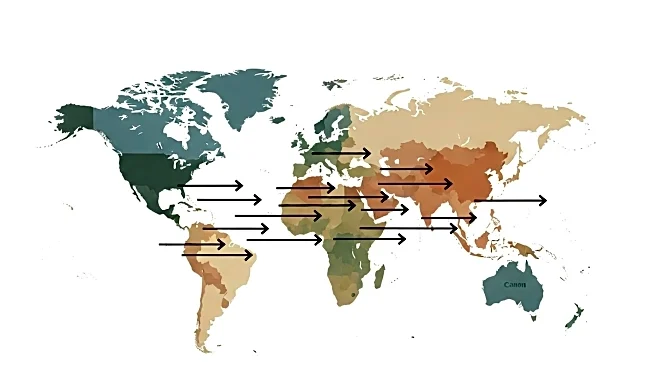What is the story about?
What's Happening?
A recent study by Penn State researchers, published in Nature Communications, has provided new insights into the spread of farming during the Neolithic Revolution. The research, which combined ancient DNA analysis, archaeological records, and computer simulations, concluded that farming primarily spread through the migration of early farmers rather than the local adoption of agricultural practices by hunter-gatherers. The study analyzed DNA from 618 Neolithic individuals across Europe and found that cultural diffusion played a minimal role, with migration being the dominant factor. The findings highlight that while cultural transmission was limited, it still left a lasting genetic impact on European populations.
Why It's Important?
This study is significant as it reshapes the understanding of one of humanity's most transformative periods. The findings suggest that the movement of people, rather than the mere exchange of ideas, was crucial in spreading farming practices across Europe. This has implications for understanding the genetic makeup of modern European populations and the historical dynamics of cultural and technological exchange. The research underscores the importance of migration in shaping human history and could influence future studies in archaeology and genetics, providing a clearer picture of how ancient societies interacted and evolved.
What's Next?
The study opens avenues for further research into the social structures and interactions between migrating farmers and local hunter-gatherers. Future studies may explore the genetic and cultural exchanges that occurred during this period, potentially uncovering more about the social dynamics and technological advancements of early farming communities. Additionally, the methodologies used in this research could be applied to other historical transitions, offering new insights into the spread of technologies and cultural practices throughout human history.
Beyond the Headlines
The research highlights the strict social boundaries that existed between farmers and hunter-gatherers, with minimal intermarriage between the groups. This finding suggests that early farming communities maintained distinct cultural identities, which could have influenced the development of social hierarchies and community structures. The study also emphasizes the role of migration in introducing new genetic traits, which may have contributed to the adaptability and resilience of early farming populations.
AI Generated Content
Do you find this article useful?















